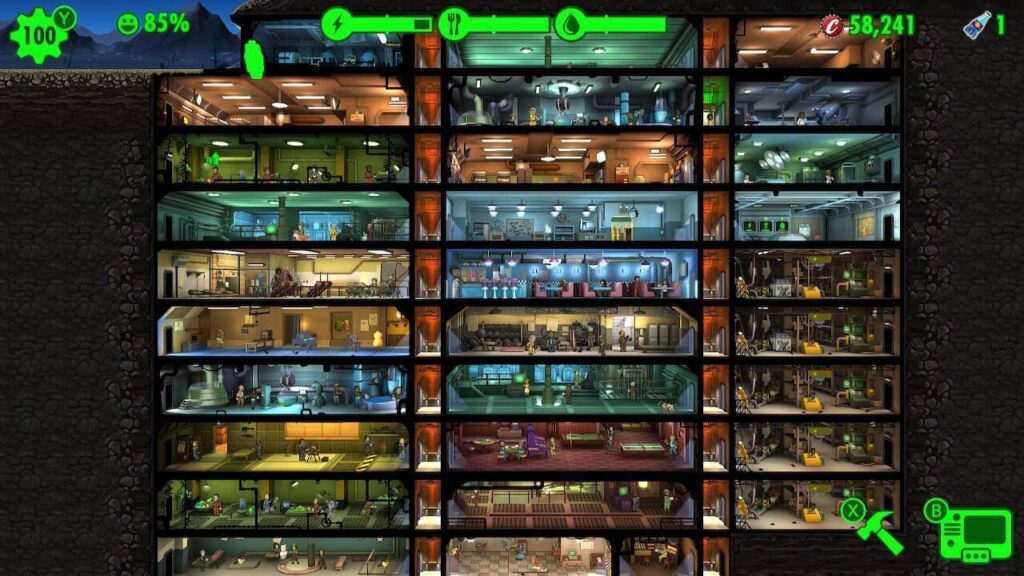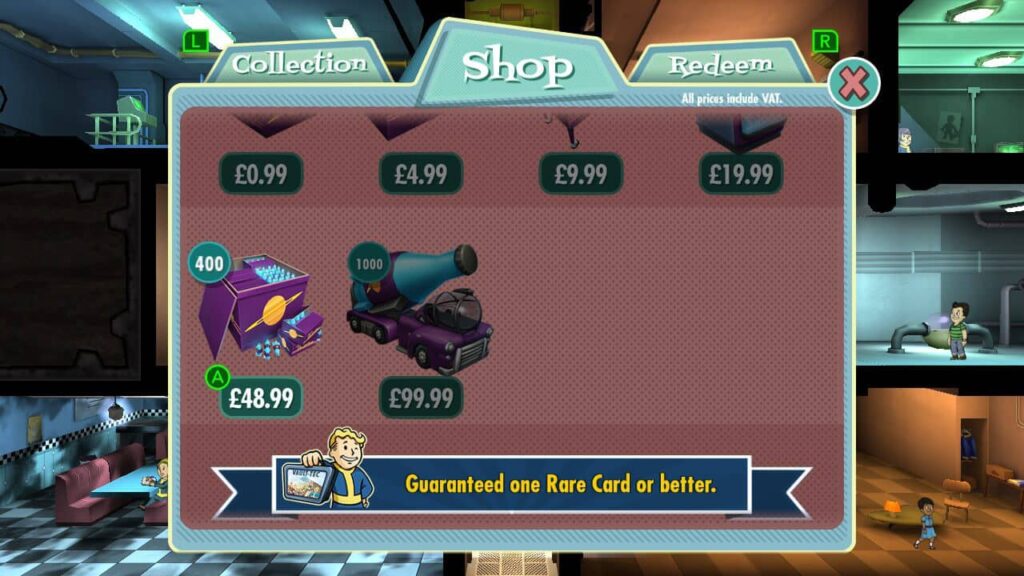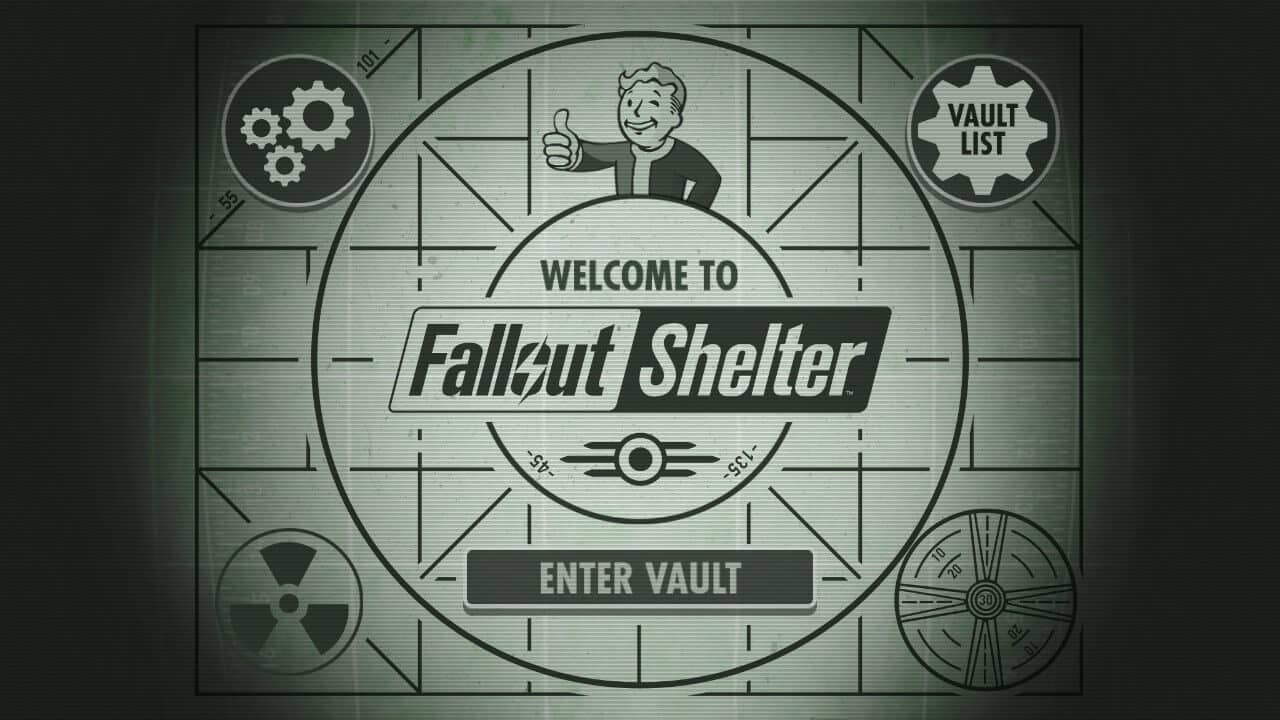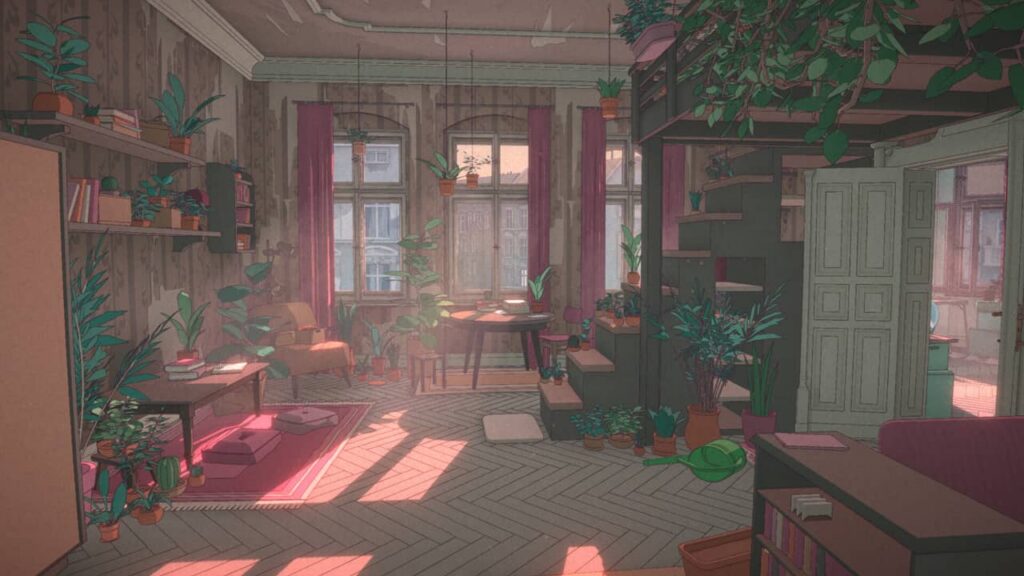Not being a fan of microtransactions in games, I gave Fallout Shelter a snub when I first heard about it. I was late to the Fallout series anyway – Fallout 3 being my first taste of the world, followed by Fallout 4. Fallout Shelter was released in 2015. Four years later, I decided to download it and give it a quick try.
The concept is quite simple: you have your shelter full of dwellers, so it’s a micro-management game of sorts. You build rooms in a series of blocks, taking place within an underground vault. Most rooms are one block in size, but there is the possibility to put three in a row to create a larger room, often with a higher output of whatever the room’s function is. The key resources, naturally, are power, food and water.
With a cap of 200 dwellers, your goal is to get them to Netflix and chill, keeping the birth rate up, whilst unlocking new technology and gear. As with the other games, Fallout Shelter uses bottle caps as currency, and these are earned through minor feats, as well as venturing out into the wastelands to complete quests that are triggered from a dedicated Overseer’s office. Alternatively, you can send out a dweller to explore and hope they come back alive.

As can be expected, resources are initially limited, and though patience is a virtue, you may find yourself ‘rushing’ a room. This means speeding up the process time at the risk of failure. Said failures can result in radiation poisoning, an infestation of roaches or <gulp> oversized scorpions, or worse, a lack of street cred with your population. However, pop them into a room with someone of the opposite sex, and they’ll bump uglies, drop a sprog and forget all about it.
Fallout Shelter’s quests are ultimately the key way to progress and are limited in how many you can do at a time. These are typically real-time, meaning completion is some 18 hours or so later. You can speed this up to using cola bottles, which are quite scarce, and that’s where the micro transactions come in, though they are not mandatory. Unless you’re impatient.
When your team does arrive at the quest location, you get to manually control them by deciding which room to go into next. It’s a pseudo turn-based affair as you’ll target an enemy and will have to watch the automated battles based on the equipment donned. Decided on a rocket launcher? Great! Just don’t expect a high fire rate. To navigate the effectiveness of these quests, aside from consumables to rid radiation away or administer health, stats can be increased through missions, exploration, and training rooms.

These dedicated rooms boost your dwellers’ stats to improve combat or worker efficiency. There’s also a charisma stat that will boost the chances of having a kid, which inherits the key stats of their parents. Forget Captain America, in Fallout Shelter, you can breed super soldiers underground. Regrettably, it takes a very long time, and the game is significantly addictive. That’s how they get you: it’s a free-to-play title!
It’s possible to play through without spending a penny. I’ve played countless hours on Fallout Shelter on the Switch, PC and PS5 now (2025 when updating this 2019 review that was 1900 words!), and easily kept my hand in my pocket. However, back when I wrote this, I was confined to a hospital bed and spent a few pennies on cola to boost training. It was worth it, but not essential.
The further you progress, the better the equipment, though it does become silly, which is why you could be tempted to buy in-game currency. My weapon room cost 90000 caps (you get about 10 for a simple task), and it would take eight real days to build one weapon. Despite all of this, Fallout Shelter is free, and as per the update to this review, I’ve been addicted for the last six years on and off. Well worth it.










